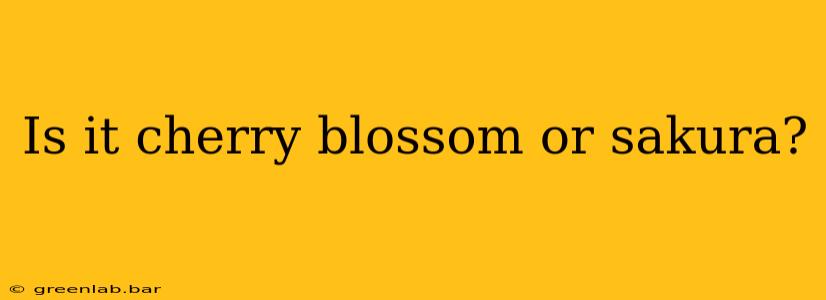The terms "cherry blossom" and "sakura" are often used interchangeably, leading to confusion. While they both refer to the beautiful flowering trees that symbolize spring in many cultures, there's a subtle yet important distinction. This article will delve into the nuances, clarifying the relationship between these two terms and exploring their cultural significance.
Cherry Blossom: The Broader Term
"Cherry blossom" is a more general term encompassing the blossoms of various Prunus species, including those that produce edible cherries and those primarily grown for their ornamental flowers. Think of it as an umbrella term. Many different types of cherry trees boast stunning blossoms, ranging in color from the iconic pale pink to deep rose, and even white. This wide variety contributes to the expansive meaning of "cherry blossom."
Types of Cherry Blossoms Included Under the Umbrella:
- Ornamental Cherry Trees: These are cultivated primarily for their aesthetic appeal, boasting vibrant blossoms but often producing inedible fruit, if any. Many of the celebrated cherry blossom trees found in parks and gardens across the globe fall into this category.
- Cherry Trees with Edible Fruit: These trees produce cherries we enjoy eating, and while their blossoms might not be as showy as some ornamental varieties, they still contribute to the overall concept of "cherry blossom."
Sakura: The Specific Japanese Term
"Sakura" (桜), on the other hand, is specifically the Japanese word for cherry blossoms. However, it usually refers to the flowering cherry trees primarily cultivated for their blossoms, particularly species like Prunus serrulata (commonly known as Japanese cherry) and its many cultivars. These are the varieties most famously associated with hanami, the traditional Japanese custom of flower viewing. Therefore, while all sakura are cherry blossoms, not all cherry blossoms are sakura.
The Cultural Significance of Sakura:
In Japan, sakura hold profound cultural significance. The fleeting beauty of their blossoms symbolizes the transient nature of life and the importance of appreciating the present moment. The ephemeral beauty of the blossoms is a powerful metaphor, fostering a deep connection between the Japanese people and their natural world. The hanami festivals are a testament to this profound connection.
The Overlap and the Distinction:
The key takeaway is the level of specificity. "Cherry blossom" is a broad term encompassing numerous species, while "sakura" points to a specific type of cherry blossom with deep cultural roots in Japan. Using "sakura" implies a reference to the Japanese aesthetic and cultural context, whereas "cherry blossom" is more general and geographically non-specific.
Conclusion:
While interchangeable in casual conversation, understanding the difference between "cherry blossom" and "sakura" allows for a richer appreciation of these beautiful trees and their cultural significance. Next time you see these breathtaking blooms, remember the nuanced distinction—and the beauty it represents.

